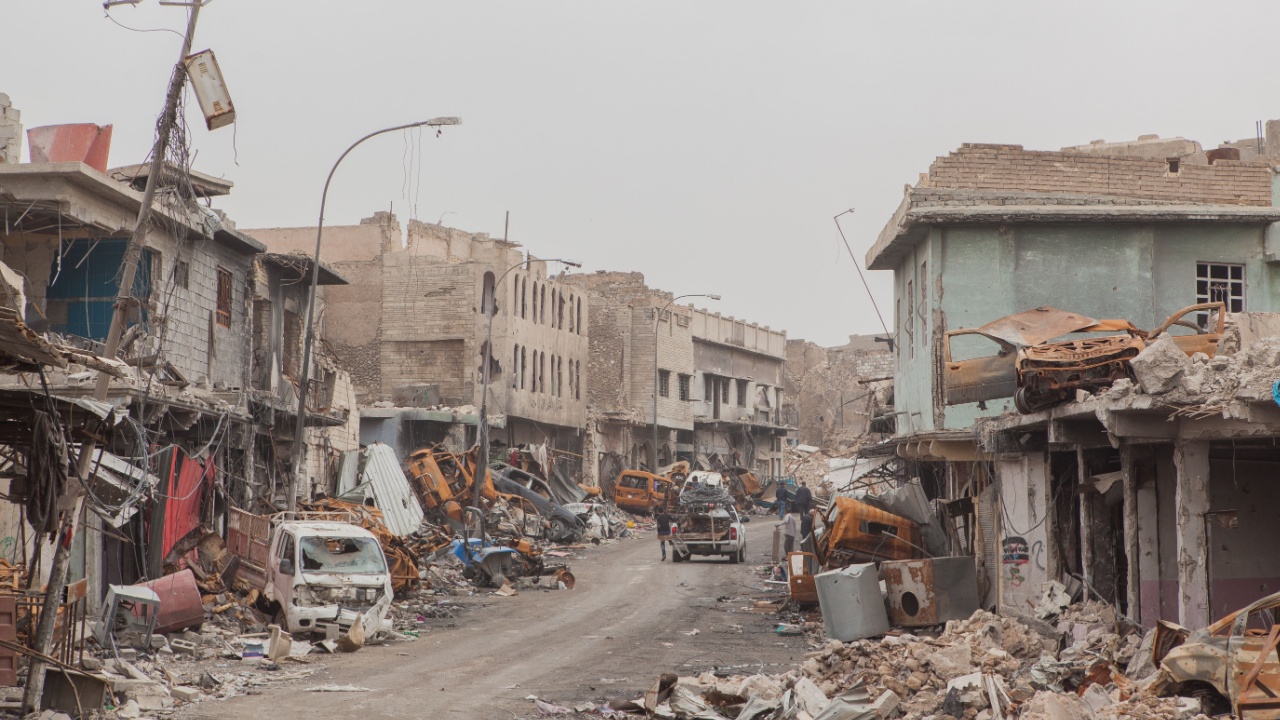
Will Iraq’s Iran-Backed Militias Disarm?
Due to Iraq’s position in the region, the armed paramilitaries increasingly present a challenge for stability.
Iranian-backed militias continue to play an outsized role in the politics determining the future of Iraq. The militias come under the umbrella of an armed paramilitary force called the Popular Mobilization Forces (PMF). Together, the militias number more than 200,000 personnel, though estimates vary. They play a role across a large swath of Iraq, from the Nineveh plains near Mosul to Anbar province on the border with Syria. There are increasing calls for the government to rein in these groups and roll back Iran’s oversized influence in the country. However, armed militias rarely fade away easily.
On April 7, Reuters reported that it had spoken to several commanders within the militias and that they were considering disarming. The report claimed this was being considered to “avert Trump[’s] wrath [sic].” Apparently, the militias have seen how the United States is bombing the Iran-backed Houthis in Yemen since mid-March and are considering what’s next for their role in Iraq. At the same time, another report from The Times indicated that Iran is sending long-range surface-to-surface missiles to the militias.
Can both reports have a hint of truth to them? The militias may be messaging to international media that they are considering “disarming.” At the same time, some of them are also taking delivery of offensive weapons. The militias have taken delivery of Iranian missiles and drones in the past. In 2018, Iran transferred ballistic missiles to Iraqi militias as well. However, these appear to have been of more limited range.
Groups such as Kataib Hezbollah, for instance, have used drones to target American soldiers. One attack killed three and wounded over forty American personnel in Jordan in January 2024. Kataib Hezbollah is very close to the Islamic Revolutionary Guard Corps in Iran. It is also a key part of the Popular Mobilization Forces. As such, it’s difficult to determine where Iran’s role ends and the role of Iraq’s government begins in terms of command and control over the militias.
Kataib Hezbollah has rejected claims that it is disarming. This sets up a potential collision course for the future. The militias could assent to pressure from the United States by placing their arms in official Iraqi military depots, so that their use could be monitored. The militias in Iraq are facing these key questions as Iran is moving forward with indirect talks with the Trump administration. This is also happening as the United States is carrying out strikes on the Houthis, and as there is pressure on Hezbollah in Lebanon to disarm.
Therefore, it’s worth considering this larger context. The militias in Iraq could be pressured to reduce their role as part of an Iran deal with the United States. On the other hand, they could also demand institutionalization within Iraq’s military system via favorable legislation and an increase in member payments.
In Congress, Representative Joe Wilson (R-SC) introduced a bill in early April to create an “interagency strategy to free Iraq from Iran.” The bill would cut off funding for the militias, designate them as terrorists, and stop security assistance to Iraq until Iraq takes steps to remove “Iranian-backed puppet militias.”
The militias and their leaders will not give up influence easily. Qais Khazali, the leader of Asaib Ahl al-Haq (AAH), was once a detainee of U.S. forces at Camp Cropper. He is a sanctioned terrorist. He gave a speech at the end of Ramadan claiming there is an Israeli-backed conspiracy to divide Syria and Iraq. This is the kind of rhetoric that will need to be confronted in order to pressure groups like AAH to reduce their role in Iraq.
Due to Iraq’s position in the region, the militias increasingly present a challenge for stability. For instance, they threaten Jordan, which is a key Western partner. They also could threaten Syria, where a new government is taking shape that is trying to unify the country after more than a decade of civil war. They also now have the long-range weapons to threaten U.S. military assets and the Gulf nations. As such, the militias sit at a crossroads in the region. The struggle for the future of Iraq will continue to revolve around the militias unless a solution to their role in Iraq is found.
Seth Frantzman is the author of Drone Wars: Pioneers, Killing Machine, Artificial Intelligence and the Battle for the Future (Bombardier 2021) and an adjunct fellow at The Foundation for Defense of Democracies. He tweets at @sfrantzman.
Image: Sebastian Castelier / Shutterstock.com.